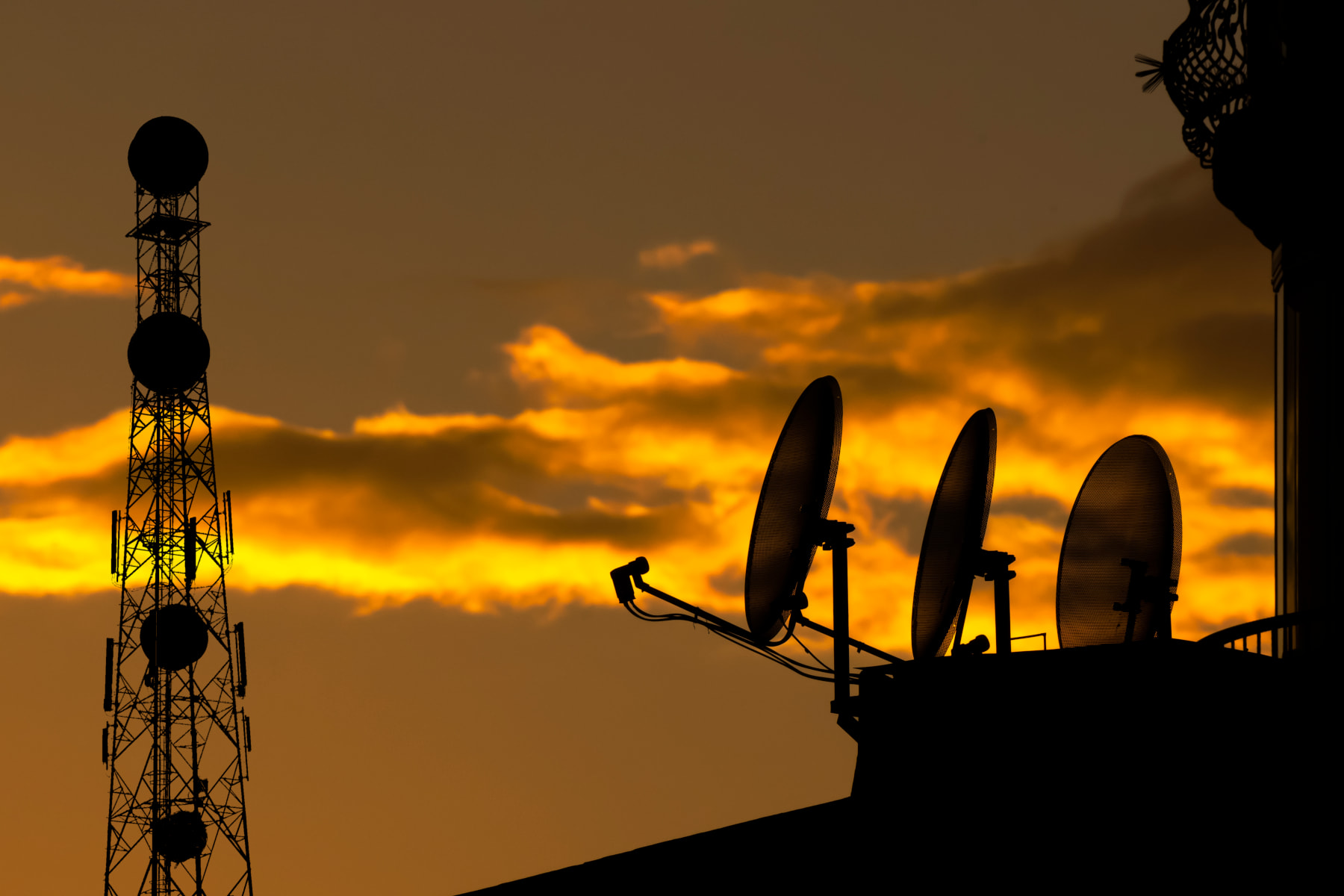Can You Actually Get Unlimited Satellite Internet?
Getting past buzzwords to find the best satellite plans
Jul 5, 2023 | Share
Brand Guides
With the exception of Starlink (sort of), all satellite plans come with data caps, which is one of the major drawbacks of satellite internet. When most people talk about unlimited internet, they’re talking about plans with no data limits, like those from providers like Verizon or Google Fiber. Most satellite providers don’t currently offer these kinds of plans, but they do handle data caps a bit differently than some other providers.
If this seems a bit misleading to you, you’re not alone. Internet advertisements are full of buzzwords and marketing speak that often means the exact opposite of what you might think. To figure out exactly what these providers mean when they claim “unlimited satellite internet,” we’re going to go into depth on satellite data caps so you can find the plan that meets your needs.
How do data caps work?
Data caps, sometimes referred to as data limits or bandwidth caps, are restrictions by internet service providers (ISPs) on the amount of data that can be transferred over your connection. Data usage is usually calculated over the course of a single billing period, so if your internet bill is due on the 15th of every month, your data allowance will reset on that day too.
One of the main things that differentiates satellite plans is the amount of data you’re allotted per month. This is a big difference from wired internet connections like cable and fiber, where speed is the main feature and data caps are more of a footnote. In the case of HughesNet, for example, all its plans have a speed of 25 Mbps, so you’ll pick your plan based on the amount of data you need.
Many online activities, like opening a web page, playing an online game, or checking your email, don’t actually use much data, and won’t make a huge impact on your monthly data usage. Other activities, including anything involving video or streaming, can burn through data very quickly. When choosing an internet plan, it’s important to know how much data your household needs to avoid signing up for a plan where you’ll go over the data limit.
What happens when my data runs out?
For satellite customers, once you hit your data cap for the month, your speed is deprioritized or throttled. This means that instead of giving you “high-speed” data, your connection is deprioritized, getting its share of bandwidth after everyone else’s traffic has been taken care of. This means that your speed will be even lower than normal satellite speeds.
Fortunately for those who underestimate their data usage, both Viasat and HughesNet make it easy to buy additional data if you go over your cap. That means you don’t have to stress too much if your data starts running low, but you don’t want to make a habit of it, as it’s usually cheaper to upgrade your plan to one that meets your needs than to buy extra data every month.
HughesNet plans also come with 50 GB of Bonus Zone data between the hours of 2:00 a.m. and 8:00 a.m. Although that’s pretty inconvenient for most online activities, it does give you a time to schedule things like system updates, which could otherwise eat up your entire data cap for the month in one go. You can also use this time to download media like games or video that you can then play offline during the day.
Although throttled speeds are a pretty big inconvenience, the value you get from your “high-speed” data assumes that when you have data on your account you’re getting close to advertised speeds. During our hands-on testing of HughesNet, we found that our connection was surprisingly slow with or without data. Although it did seem to slow after we passed our data limit, the difference wasn’t really that impactful. So before you buy that extra data, you should take a few minutes to see if your normal online activities are actually impacted by the decrease in speed.
Starlink data plans
Traditional geosynchronous (GSO) satellites, like Viasat and HughesNet have always had very restrictive data caps compared to terrestrial internet, however, Starlink set out to challenge these assumptions. At the time of its launch, Starlink offered truly unlimited data, though it had to roll this back as its network struggled to manage the influx of eager Starlink customers.
After waffling back and forth on the issue and briefly implementing a 1 TB cap (which is still massive for satellite data), Starlink has gone back to offering unlimited data on its satellite internet, though there is a catch.
In place of caps, Starlink now has three tiers of priority for its customers: mobile, standard, and priority/mobile priority. Residential plans come with Standard data by default, though you can purchase a chunk of priority data for the month starting at 1TB (50GB for mobile priority). For those who have been paying attention, paying for “priority data” with Starlink and paying to avoid “deprioritized data” with other satellite providers kind of sound like the same thing.
The somewhat murky distinction between Starlink’s unlimited data and the limited data of its competitors is that when you run out of data on a normal satellite plan, your speed is generally throttled well below advertised speeds, making your connection barely usable. For Starlink, standard priority isn’t even the lowest tier, so it would seem that you can still reach advertised speeds without purchasing data.
This heavily qualified version of unlimited data is still pretty impressive for a satellite connection. Assuming that the Standard data plan never drops below the minimum advertised speed, Starlink gives you the ability to pretty much everything you could do on any other unlimited internet plan, including streaming video and downloading software without having to pay for additional data.
How much data do satellite providers offer?
| Provider | Data Cap | Speed | Introductory Price | Order online |
|---|---|---|---|---|
| 60–500 GB | 25–150 Mbps | $59.99–$299.99/mo.* | ||
 | 15–200 GB | 25 Mbps | $64.99–$174.99/mo.† | |
|
| No data cap for Standard or Mobile data plans. Starting at 1 TB (1,000 GB) for Priority data Starting at 50 GB for Mobile Priority | 20–100 Mbps | $120.00/mo.‡ (includes standard data) | View Plans |
Data as of 7/5/2023 Offers and availability may vary by location and are subject to change.
*Prices and availability vary by location. Installation fees, monthly equipment lease fees, and taxes may apply. After 100 GB of High-Speed Data usage, you still have unlimited access to Standard Data, which may result in slower speed.
†Pricing for the first 6 months. Service plans require a 24-month commitment. Pricing not available in all areas.
‡Plus hardware, shipping & handling fees, and tax. Fully refundable. Depending on location, some orders may take 6 months or more to fulfill.
Most satellite plans range from offering less than twenty gigabytes to a few hundred. If we include Starlink’s Priority data plan in the comparison, it’s still the outlier, providing a whopping terabyte (1,000 gigabytes) of priority data each month, which is much closer to what you might expect from data caps on a wired internet connection.
The amount of data you burn through depends on the speed of your connection. Slower connections can’t handle data-intensive activities like high-resolution video, so you’ll burn through data much more slowly. Faster connections don’t automatically burn through data quickly (you’re not going to burn through hundreds of gigabytes with normal web browsing), but they make it possible to burn through a surprisingly large amount of data if you’re not paying attention.
Are data caps even necessary?
Data caps used to be a fact of life, but for wired internet, they’ve mostly disappeared. Providers justified data caps as necessary for network management, but this was proved untrue during the COVID-19 pandemic, when many data caps were suspended with no ill effects on the network.1 Although some providers tried to reinstate these artificial limits as pandemic relief programs ended, data caps had been exposed as just another way for ISPs to nickel-and-dime their customers while offering no added value in return.
While modern internet infrastructure has made data caps obsolete for wired connections, it’s not entirely clear if wireless providers can get by without them. Starlink experimented with truly unlimited data, only to walk back its policy to keep its network functioning. Of course, Starlink has struggled in many other areas, including download speed and equipment shipment, as it tries to scale its operation up to a true nationwide internet provider.2, 3 As such, Starlink’s move probably says more about the logistics of the company than the limits of the technology.
For now, Starlink is the only way to get unlimited data on a satellite connection, even if there are some potential issues you could run into. Hopefully, as Starlink gets its act together and other competitors throw their hat into the ring, truly unlimited data will become the norm for satellite just as it is for other internet connections.
Sources
- Caleb Denison, DigitalTrends, “The Pandemic Proves ISPs have been Scamming Us with Data Caps for Years,” Published May 14, 2020. Accessed January 30, 2023.
- Aaron Leong, DigitalTrends, “Why Starlink download speeds are experiencing double-digit dips,” Published November 30, 2022. Accessed January 30, 2023.
- Kate Duffy, Business Insider, “SpaceX’s Starlink User Growth Dropped in December As Some Preorder Customers Became Frustrated Over Waiting 11 Months for the Internet Service,” Published January 7, 2022. Accessed January 30, 2023.
Author - Peter Christiansen
Peter Christiansen writes about satellite internet, rural connectivity, livestreaming, and parental controls for HighSpeedInternet.com. Peter holds a PhD in communication from the University of Utah and has been working in tech for over 15 years as a computer programmer, game developer, filmmaker, and writer. His writing has been praised by outlets like Wired, Digital Humanities Now, and the New Statesman.




